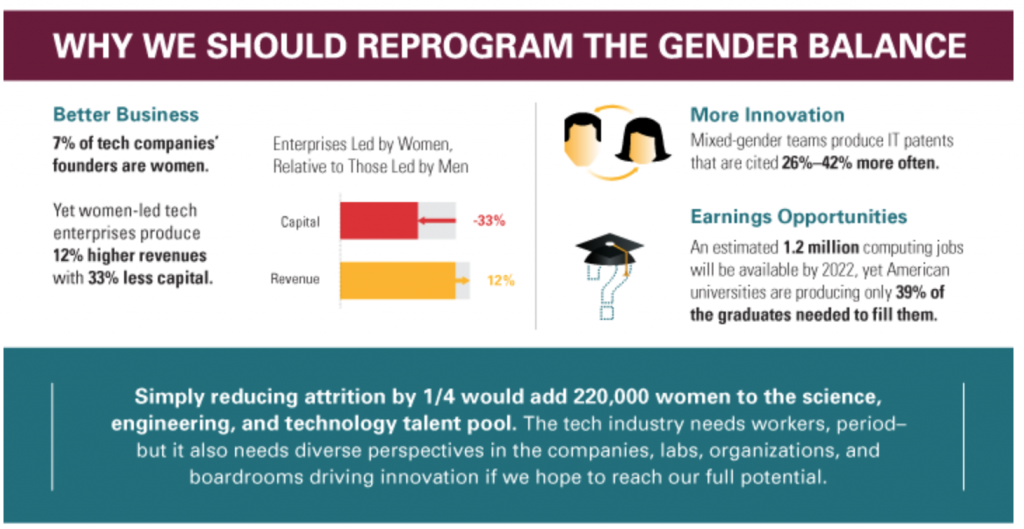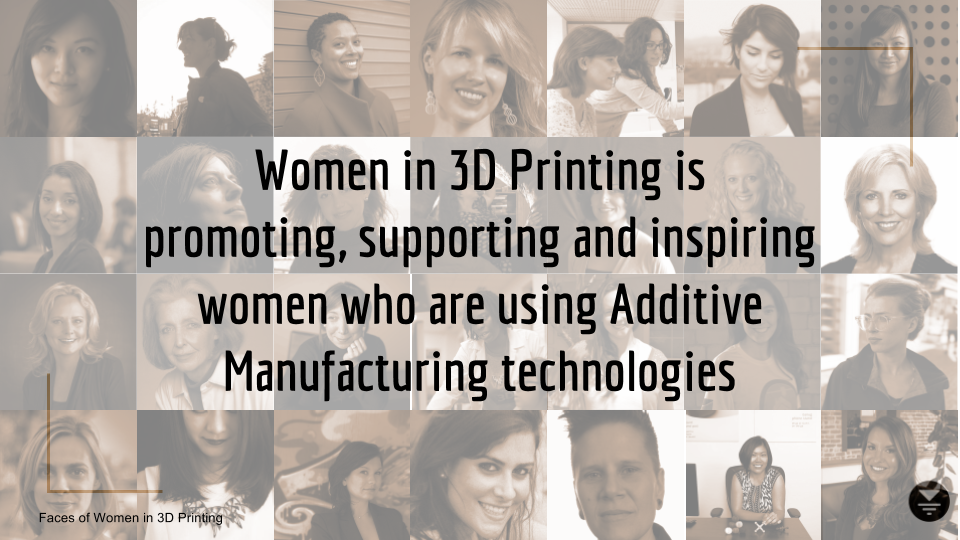It is a well known and well documented fact that the 3D printing industry, and manufacturing in general, suffers from an employee skills gap. Added to this, is the issue of representation, and the potential advantages that diversity brings to any company seeking to reach a broad customer base.
Set up by 2018 3D Printing Industry Advocate of the Year Nominee Nora Touré, Women in 3D Printing (Wi3DP) seeks to promote, support and inspire one such group that is underrepresented within additive manufacturing. This year, the initiative has produced and supported the publication of a quarterly report concerned with Diversity for Additive Manufacturing (DfAM).
Written by Sarah Goehrke, journalist and Editor-in-Chief of 3DPrint.com, the Q1 2018 report provides subjective and objective reviews of women working in the 3D printing industry.

The numbers add up
Objective data complied in the document has been collected from 4 source reports by management consultancy firm Alexander Daniels Global, cloud 3D printing service Sculpteo, LinkedIn, and Wohlers Associates.
In a key estimate from Alexander Daniels Global’s most recent Salary Survey, the gender distribution in additive manufacturing jobs is 87% male to 13%. Split by discipline, women’s roles were divided by between R&D (8%), Application & Consulting (14%), Sales (16%), Software (6%), Service (5%) and Marketing, which is the only field within which women occupy one-fifth of employees in 29% to 71% spread.
While far from an exhaustive analysis, figures in this report were gleaned with the support of additive businesses and over 5,000 individuals across Machinery OEM’s, Material companies, Software companies and Industrial companies using 3D printing technologies.
As preliminary data, the objective analysis scratches the surface of a much deeper study which expected to come in subsequent editions of the DfAM report. Already, Sarah and Nora have said that there has been overwhelming response from others in the industry looking to contribute their data to further versions.

Areas for improvement
Though gender disparity can be witnessed firsthand at many trade shows or exec boards in the industry, the study calls out Stratasys and 3D Systems in particular, it can be difficult to get a handle on what exactly can be done to improve the issue.
Putting a spotlight on women can be counterproductive, as Sarah points out, “It can be isolating to have to deliberately focus on women, as it singles us out,
“The ultimate intention, however, is that there would be no need to make the distinction in pointing women out.”
Really, the solution is fairly simple. Visibility, as echoed by Sarah’s input and the comments of other industry insiders featured in the report, is the key.
“Invite women to keynote, to speak on panels, to present research,” states the report. Public image also needs to be considered.
“Until we can reach a larger picture of equality,” adds Sarah, “I do still see it as necessary to raise the profile of women in the industry.”
In the future there is also scope to broaden the remit of the diversity report to other areas of disparity, though this particular series will continue to focus on women in AM.
The full Diversity for A.M. #Q1 2018 Report can be accessed online here.
For more industry insights and other related news sign up to the 3D Printing Industry newsletter, follow us on Twitter, and like us on Facebook.
Join 3D printing jobs to take your career and recruitment to the next level.
Decide the technologies and innovations of the year in the 2018 3D Printing Industry Awards here.
Featured image shows a 3D printed bust of 20th century writer credited with inspiring modern feminist critique. Photo by Beau Jackson



